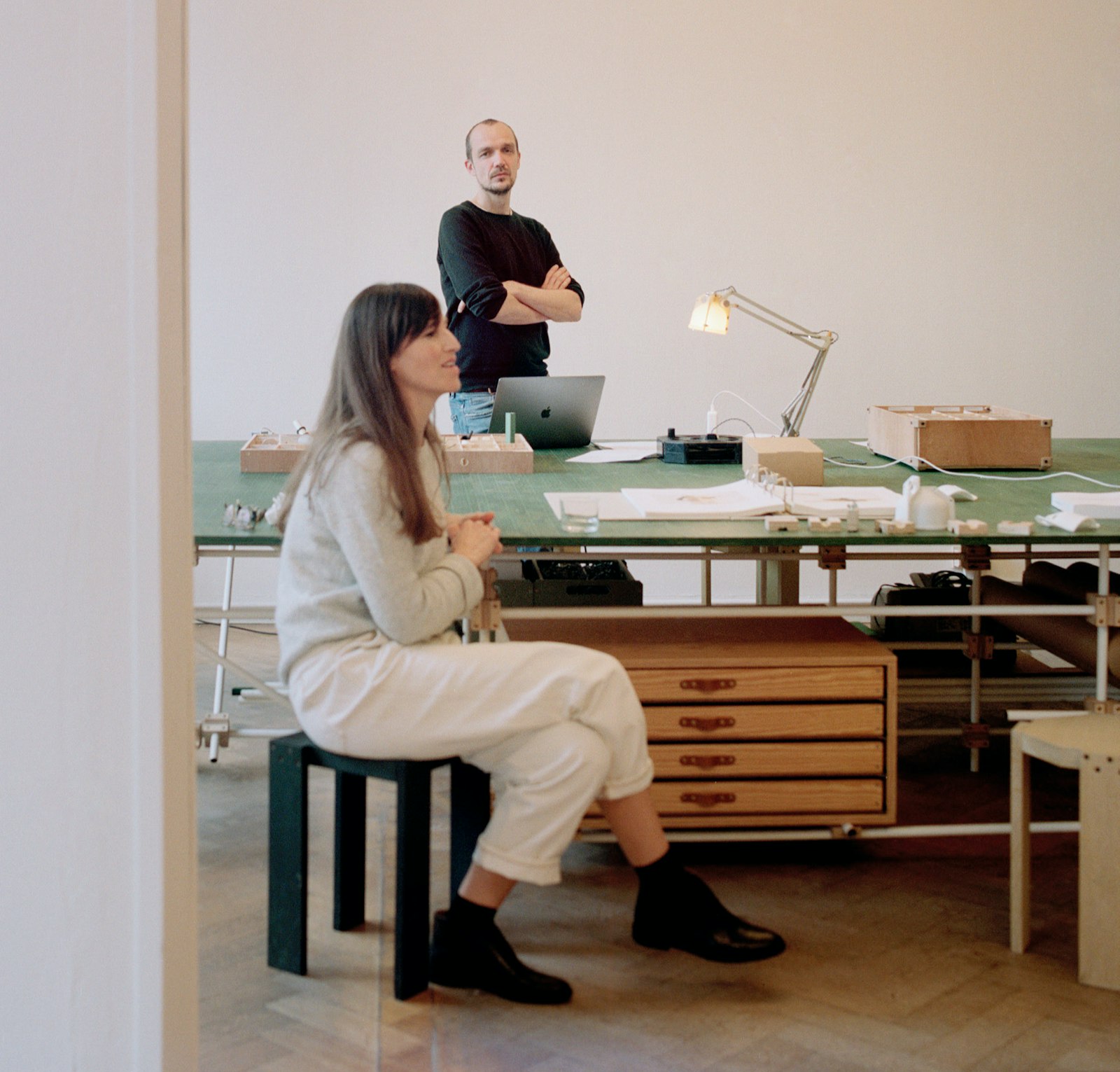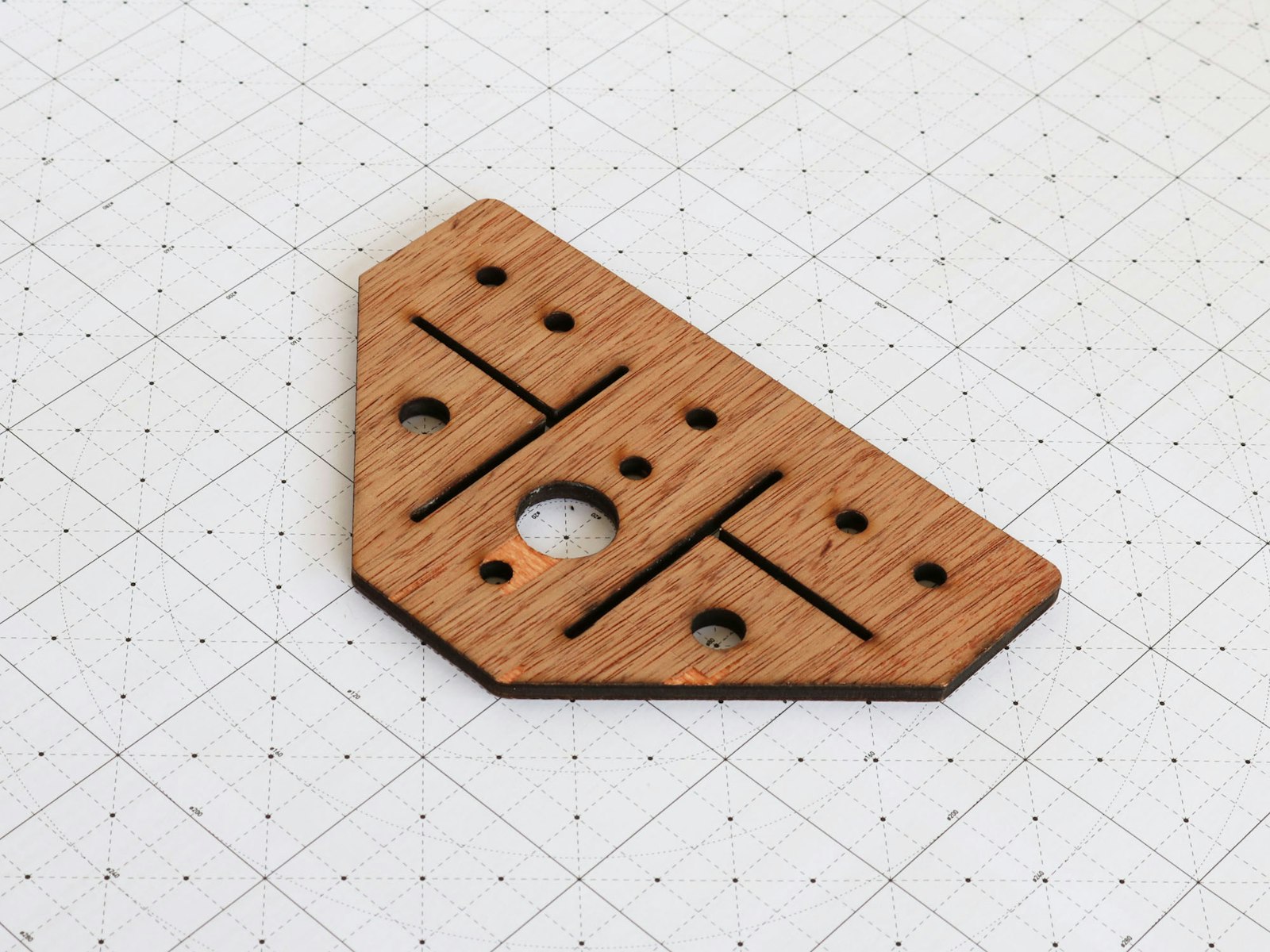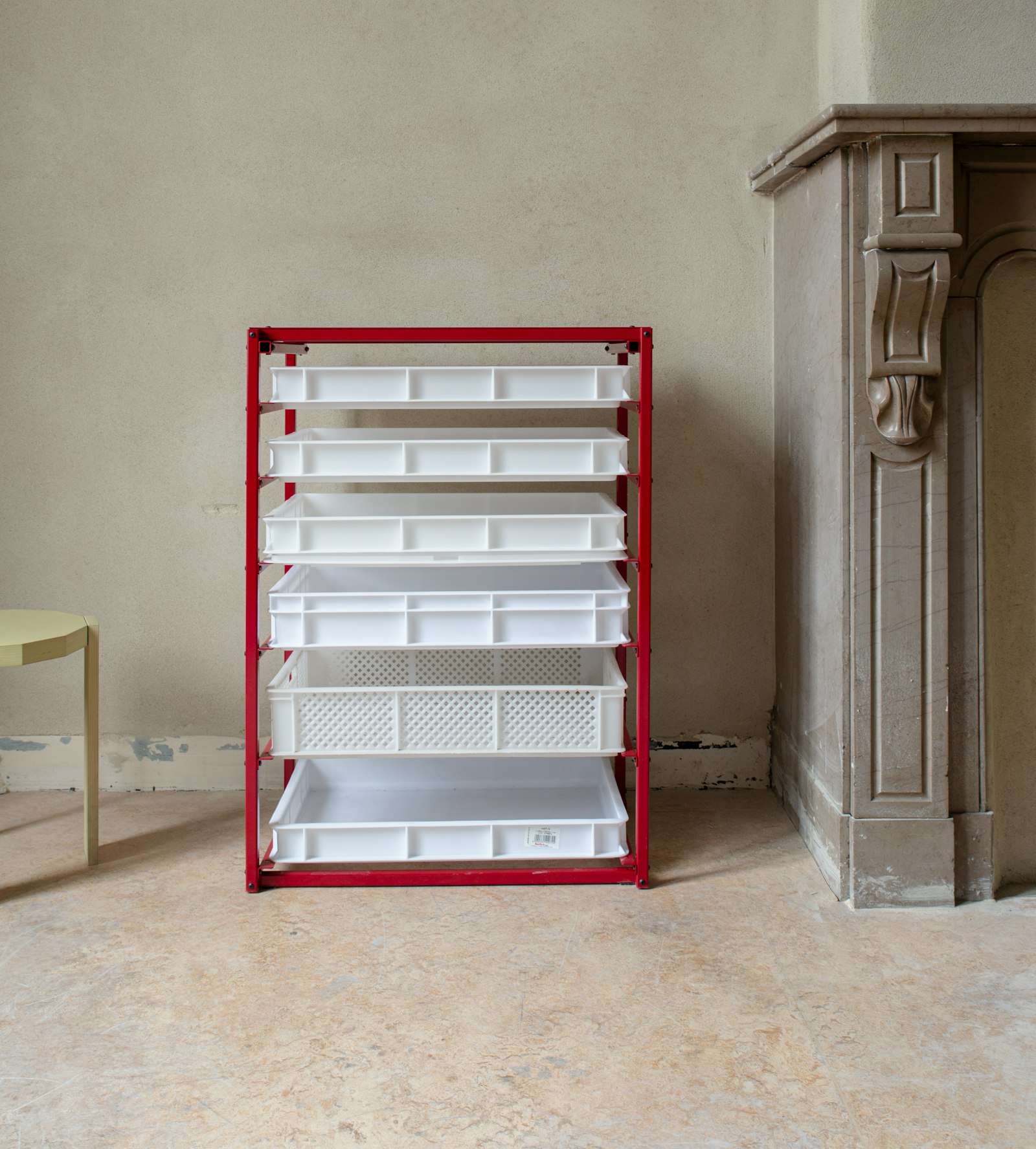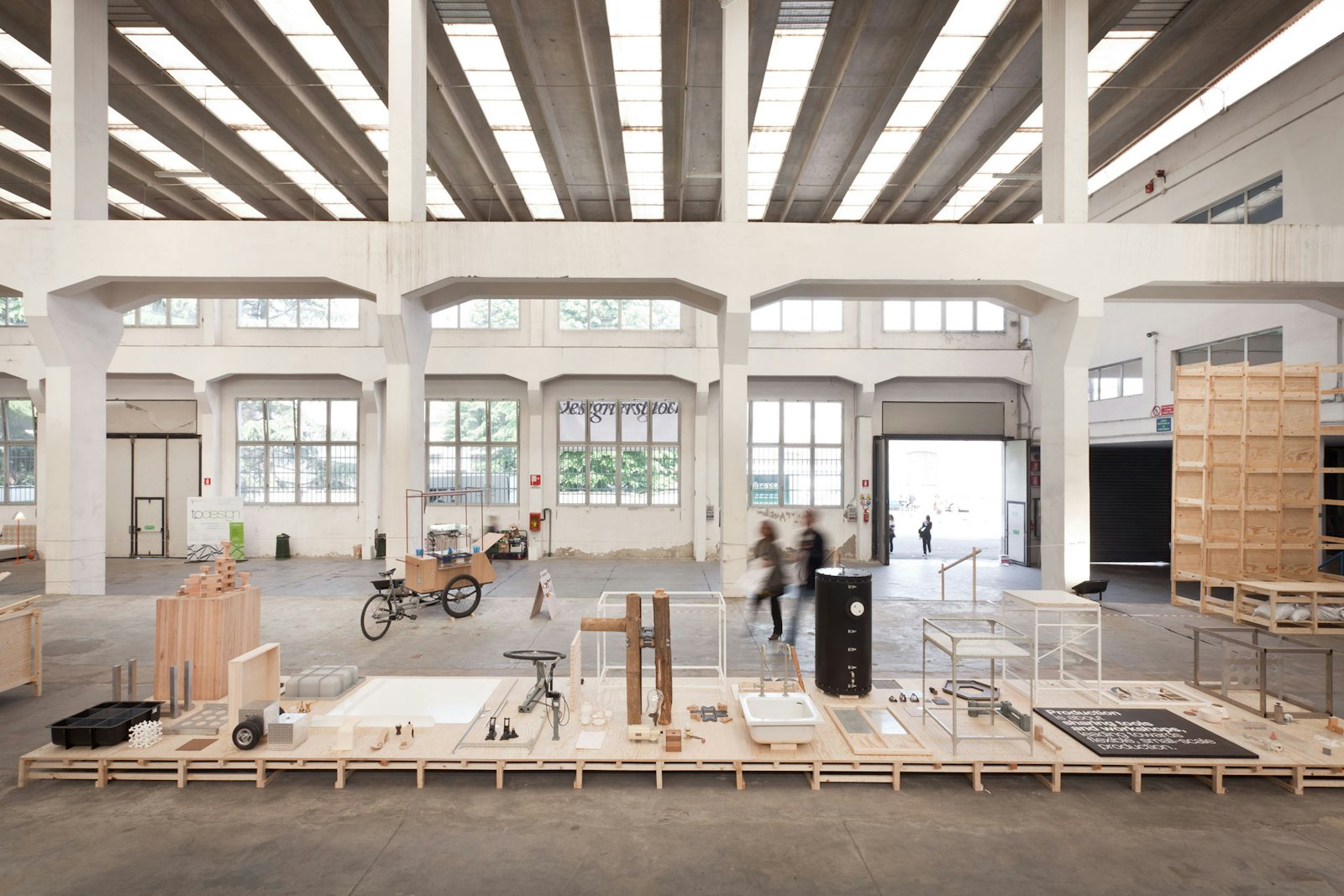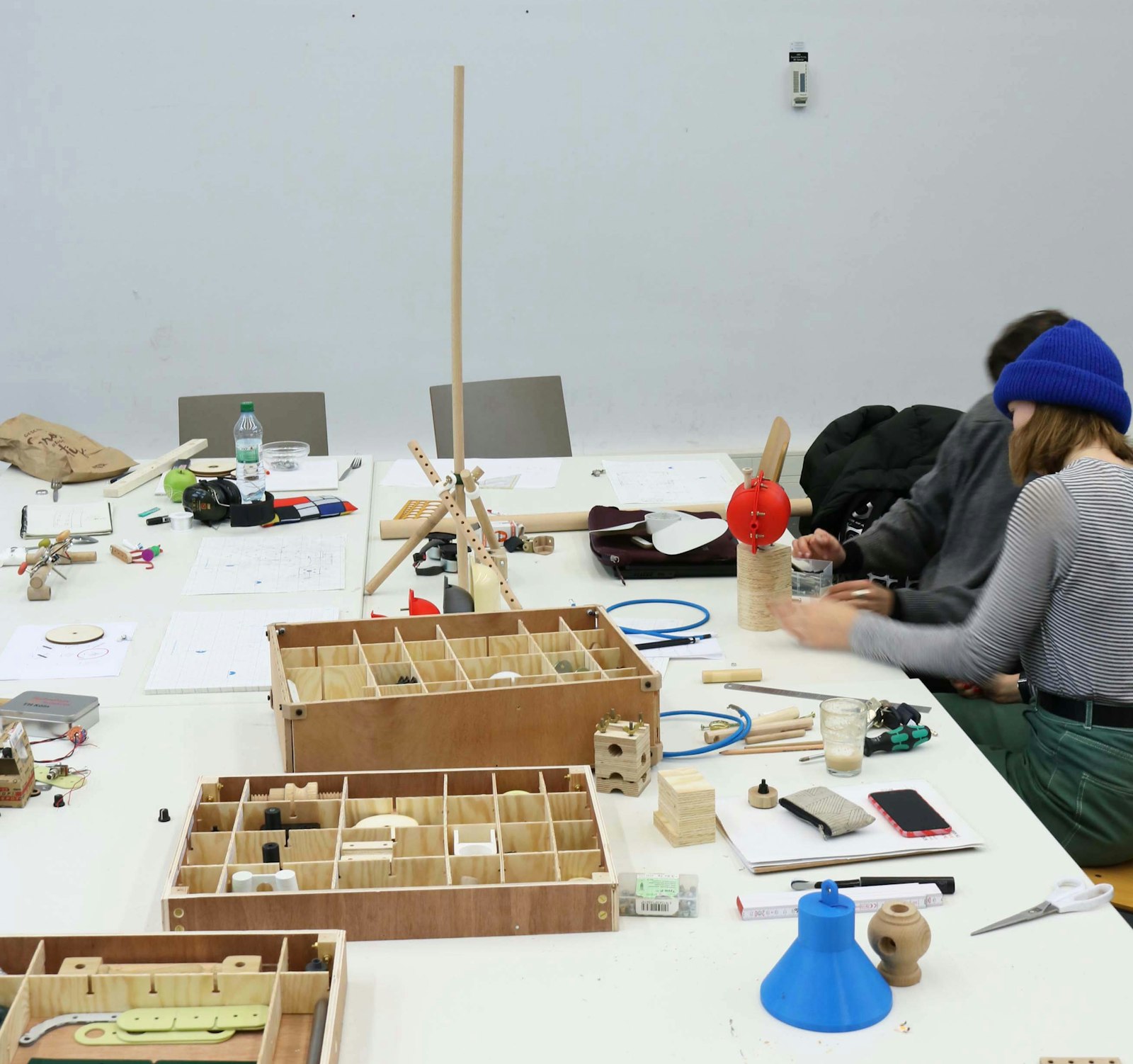de Velde
OpenStructures
We need to acknowledge that we are part of a bigger whole rather than being the whole itself. It requires us to give up the myth of creating “something new”, something that “hasn’t been done before”, and to replace it with a willingness to dissolve it into bigger projects that just make common sense. (Thomas Lommée, Domus, 2009)
This declaration that put human activity in strict interdependence with its harmful impact on ecosystems perfectly explains the attitude of Thomas Lommée and Christiane Högner, co-founders of OpenStructures, an open design system that goes far beyond past and current mainstream perspectives. The system has been evolving and adapting for over 10 years, asserting the reversibility and the permanent mutation that every design theory and practice should embody, allow and anticipate.
Based on various revolutionary models such as the internet open source, peer-to-peer collaborative networks, common creativerules and licensing, the OS system methodology can be considered as a further stage of pioneering pedagogical methods de-emphasising the design of static objects. A main contribution to these radical visions was made in the 1960s by Leonardo Mosso and Laura Castagno at the Politecnico di Torino, who developed a cybernetic programme teaching young architects to become the creators of systems that allow for the participatory interaction of users—an architettura aperta (open architecture) characterised by “the self-management (autogestione) of environmental forms and personal and collective creativity.”
More recently, Bruno Latour affirmed that designing something is always a redesigning of something previous, a sort of puzzle, which must assemble preexisting pieces, fragments of the world, to succeed in creating something new. What is important is not the objects themselves, the technologies in their brute materiality or their mechanical functioning, but their relationships, their interferences. Good design is the awareness, and the implementation, of this attitude of remediation.
Some 40 years after the publication of The Product Life Factor by Walter R. Stahel and 20 years after the first edition of the bestseller Cradle to Cradle: Remaking the Way We Make Things by Michael Braungart and William McDonough, confronted by the urgency of the climate crisis, the awareness of the energy transition has begun to arise. Despite the slow metabolism of the global business system, emerging alternatives are bourgeoning every day in all corners of the world. It is this deeply human, collaborative and ecological movement that allows design to rediscover its raison d'être, its political and mediating role, and its capacity to anticipate, catalyse and accelerate transformations for a better living.
OpenStructures is one of the most relevant examples of how design can become an agent of change in this complex transition. Crucial topics are fundamental values of this multilayered design studio. The openness and dynamic nature of objects that continuously evolve and adapt to local human and material resources, contexts and specific needs; the collaborative and inclusive social attitude of design; the regenerative and remedial responsibility of design; the role of designers in activating interconnections, sharing know-how and manufacturing processes; and, of course, the importance of assessing the lifecycle of artefacts, by enabling local circular material flows and facilitating the reuse and repair of products and structures.
It all started in 2009, a year marked by the end of the Great Recession and the beginning of the Occupy movement claiming “We are the 99%”. Social injustice, financial monopoly, capitalist system bankruptcy, the climate crisis, etc., are further influences. How do we rethink design? How do we create a design tool that is accessible, participative and deeply rooted in sustainable values? How do we build an open modular collaborative system? And finally, how do we combine one of the most popular educational toys based on reusable parts with the famous online platform promoting peer-to-peer collaborative knowledge?
Those questions and ingredients have been key to building the OpenStuctures methodology: a complex construction based on a simple template that provides the compatibility of the parts (enhancing creative and cultural diversity) and free access to a growing community of makers and users. The interaction that this system allows (parts or objects that can be downloaded, edited and published) is meant to provide an experimental, horizontal platform for a new generation of makers (in the literal sense – the platform is open to professionals, students, companies and ordinary people) and to produce a shift towards more agile and sustainable artefacts.
Today, OpenStructures consists of a database of 1,600 parts and 750 objects designed by over 330 authors: this ever-growing physical and digital archive – carefully documented and photographed - is a system that translates complexity into a sort of collective game. The rules are explained thanks to thoughtful principles and meaningful terms of use. The result is a collaborative visual guide for circular open design, providing pragmatic instructions to incorporate waste resources in the design brief and process, and an incentive to practice reuse as part of an innovative manufacturing regulation.
“The greatest urgency is to slow down consumption. Our aim is to create narratives that embody the future possibilities of what is designed now,” state the designers. Like dynamic puzzles, intentions, objects and structures are assembled and disassembled depending on specific functional needs or temporary contextual requirements. The parts are generally collected from festivals, fairs, exhibitions and various interior design sets. The collaborations are developed at the global level, while production is local.
But the systemic approach proposed by OpenStructures is not only intended to increase good practices of repairing, recycling and reuse. The inherent perspective that is brought forward contributes to a new aesthetics and ethics paradigm in the creative and manufacturing fields. The role of ephemeral, adaptive, unfinished or imperfect artefacts is disconnecting design from the idea of perfection. Each reassembled object embodies possible adaptations and upgrades recycling as a structural tool. Reuse becomes an act of remediation and care.
Carefully combining the interconnecting power of the internet with design as a physical meeting place and the learning-by-doing experience, the aim for OpenStructures is to gradually disseminate sustainable and circular assets that facilitate and reconfigure new behaviours in industrial production. But the scarcity of financial incentives makes this shift quite hard for companies. “We are still living in a world where everything is built for one use. Even if something has been designed for disassembly (which is often not the case), it is very difficult to match the parts again because, for instance, perforations are never standards. Our ultimate goal is to act as facilitators and advise designers and companies: the system could work as a kind of Ecocert certification, available to individuals and brands that apply to the system in the way they make and produce goods.”
The compatibility of parts and people will broadly permit the reassembly of infinite meanings, shapes and functions. The systemic regeneration of discarded portions of our past and current industrial history is only made possible if we all take part and play this wonderful game of co-designing for the real world.
